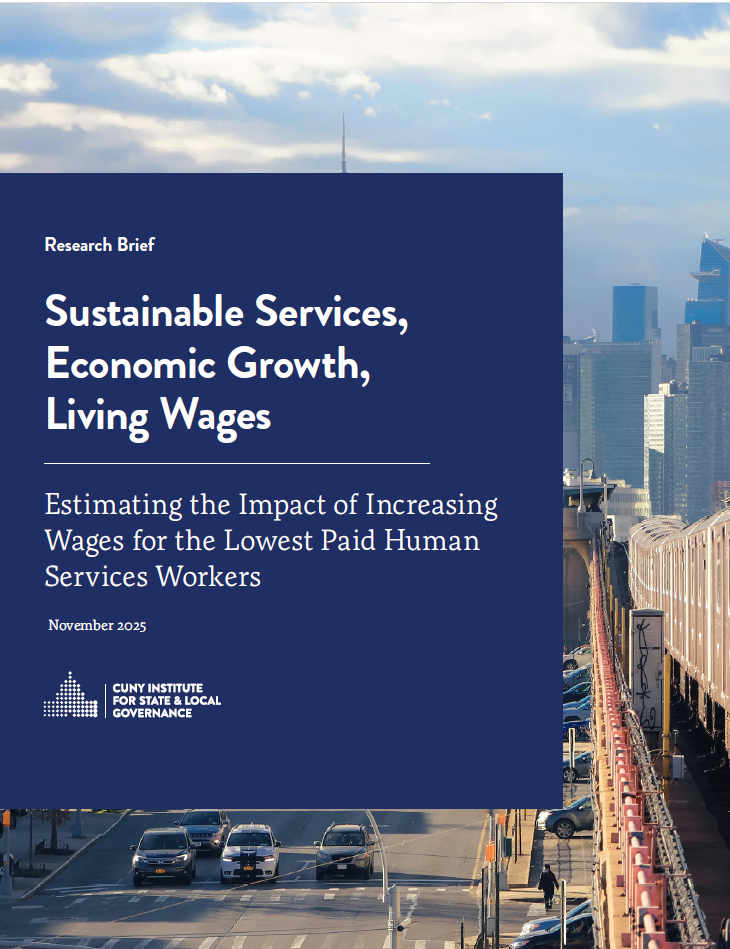Sustainable Services, Economic Growth, Living Wages
New York’s human services sector plays a foundational role in supporting the health and stability of communities throughout the state. These staff provide critical services across behavioral health, childcare services, disability support, aging services, and more.
Yet, despite the essential nature of and fast-growing need for this work, the sector has been chronically underfunded for decades. In particular, the wages for those providing these services lag behind the cost of living in New York, forcing many workers to experience the same financial and wellbeing strains as the people they serve.
Following an analysis of New York State’s human services landscape that found average annual wages in the sector are around $20k below a living wage, CUNY ISLG has conducted a return-on-investment (ROI) analysis to gain deeper insight on the impact of raising wages for the lowest paid human services workers. This brief examines the impacts of a living wage on local economies, on the stability and well-being of individuals and their communities, and what it would mean for the sustainability and service provision of human services as a sector.
The findings from the ROI analysis, presented in this brief, are as follows:
Economic Returns for New York State
Raising wages to about $29/hour—about $60,000 per year for a full-time worker—for the lowest paid human services workers would result in increased income tax revenue of upwards of $575 million annually in New York State.
Higher wages will likely lead to more spending, increasing state and local sales tax revenue by more than $400 million per year.
Increased spending power among human services workers would potentially have an economic multiplier effect of about $14 to $23 billion dollars in increased economic activity statewide.
Economic and Wellbeing Returns for Workers and Communities
Increasing wages to $29/hour could potentially lower the statewide poverty rate among human services workers from about 15 percent to under 6 percent.
Increasing wages leads to increased local spending, decreased wage disparities, and decreased poverty rates, all of which promotes healthy and stable communities.
Workers, and by extension their families and communities, are better able to avoid costly financing following a wage increase. Low-income workers often pay more for basic financial services. Without access to affordable credit or banking, people face high fees, steep interest rates, and predatory lending, making it more expensive to be low-income.
Wage increases are associated with better mental and health outcomes; better outcomes for children; reduced reliance on public health systems; and increased public safety.
Increasing wages for workers may also lead to a stronger workforce including reducing staff turnover, improving the provision of care, and creating stability.
On the blog, researchers write why this increase in wages would be a strategic policy intervention supporting a safe, affordable, thriving city.
This work was funded by the Bring Up Minimum Pay (BUMP) campaign, which engaged CUNY ISLG as an independent research evaluator to learn more about the human services workforce in New York State.

